In a way, that sums up the characteristics of the Manitoba emblem flower, the Prairie Crocus. Not that this would be the only flower with a bad habit of potentially killing people, many flowers have the same effects.

This fluffy, fuzzy flower is one of the most loved flowers here in Manitoba. Here, it signifies
Spring.
The stem and the flowers of the Prairie Crocus are covered in fuzzy hairs of a few millimeters long.
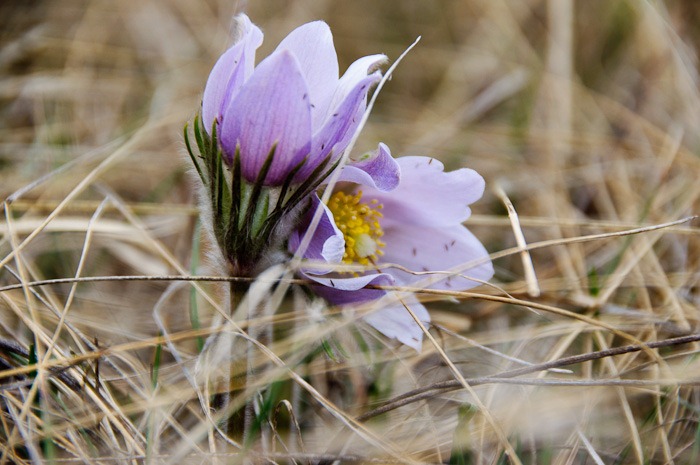
From the Manitoba Government Website:
“In Manitoba, the prairie crocus (Pulsatilla ludoviciana)—also known as anemone patens, the pasque-flower, the windflower (because of its furry petals) and the gosling plant—was officially adopted as the official flower in 1906. Interest had first been aroused by the Manitoba Horticultural Society. A subsequent vote among schoolchildren put the crocus in first place, the prairie lily second and the wild rose third.”

This sounds all very nice and healthy, but Wikipedia states the following:
“Pulsatilla is highly toxic, and produces cardiogenic toxins and oxytoxins which slow the heart in humans. Excess use can lead to diarrhoea, vomiting and convulsions, hypotension (LOW blood pressure) and coma. It has been used as a medicine by Native Americans for centuries. Blackfoot Indians used it to induce abortions and childbirth. Pulsatilla should not be taken during pregnancy nor during lactation. Additional applications of plant extracts include uses as a sedative and for treating coughs. It is also used as an initial ingredient in homeopathic remedies.”
That is a whole different kettle of fish, not as friendly fuzzy as you had thought.

The name “Crocus” is also not completely correct, more like completely incorrect.
The term "Crocus" is a misnomer applied by European immigrants to a plant that reminded them of the European crocuses (Crocus spp.), which belong to the Iridaceae (iris family). The European crocus grows from bulbs underground, the Prairie Crocus grows from seeds and has no medicinal or toxic properties as far as I know.
So, that is for the official part of the Prairie Crocus. Now let’s enjoy its sight.

The Prairie Crocus does not grow just anywhere. The ones I show here grow on an old cemetery. The “youngest” grave there is about a hundred years old. Usually this is not the most healthy place to be, but for the flowers it has a lot of benefits and nutrients.
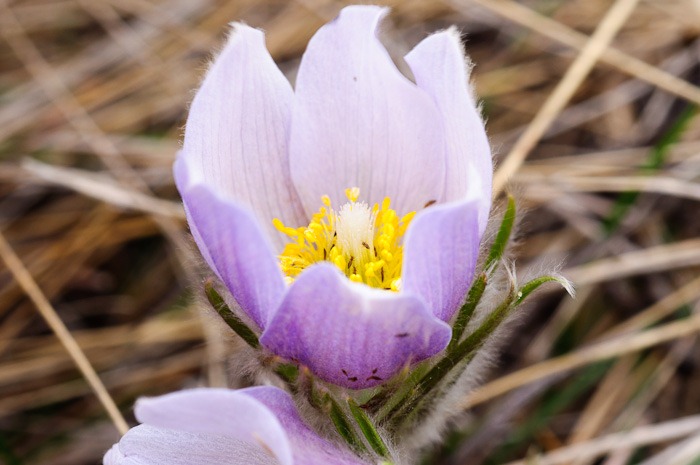
They are the first flowers to show after the long and cold winters in the prairies. Therefore they are well loved as they announce spring.

But once these guys were above ground in the cemetery, the wind came back and temperatures dropped significantly. I guess they are the only “creatures” that we like to see rise from the ground in a cemetery ![]() . The above picture shows the result of that hard wind.
. The above picture shows the result of that hard wind.
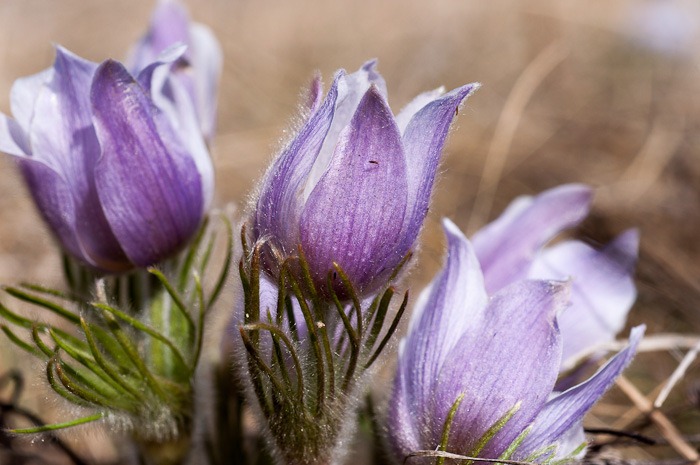
But the Prairie Crocus has no troubles with wind, cold or even snow. If you look close enough in the above picture, you can see that they are completely covered in hairs. These hairs protect the plant from snow clinging to stem and flower.
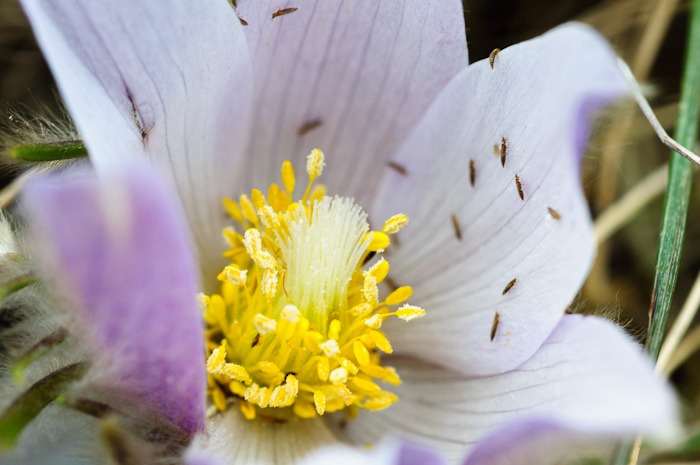
What these hairs don’t protect the flowers from is bugs. The bugs simply take the hairs as a simple inconvenience or use the long dry grass to get into the plant anyway.
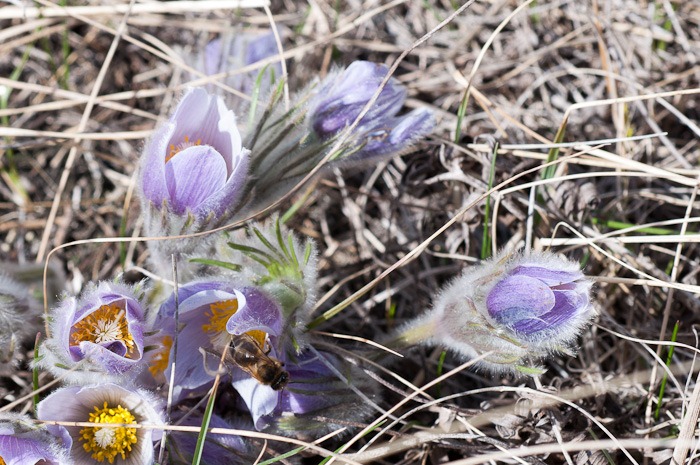
Bees on the other hand help the flower to create a new generation in a few years. The prairie crocus is a slow growing flower. If you happen to get some seeds and plant these, you may get flowers only after 3 or 4 years, not sooner.
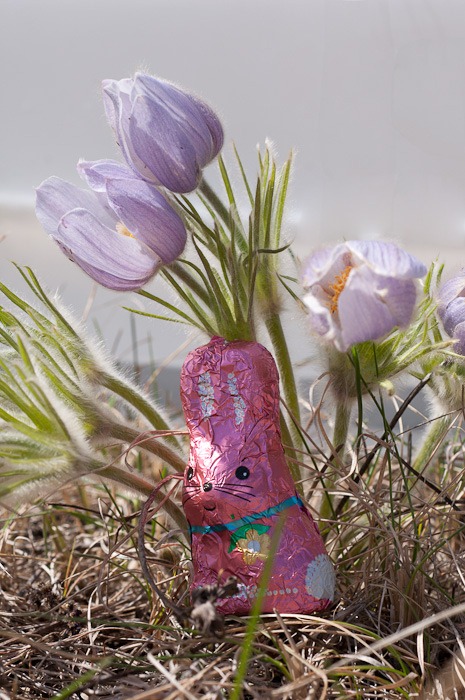
These pictures were mostly taken on Easter, we found a little gift for wild low-lying photographers. I have no idea if someone else found this little bunny as well…
Cold or not, it was a pleasure taking pictures of these flowers. But as usual, the motto is: Take only pictures and leave only foot prints. In my case I left some belly prints as well. But touching these plants is definitely not a good idea.
Until next time… enjoy the Prairie Crocus!
